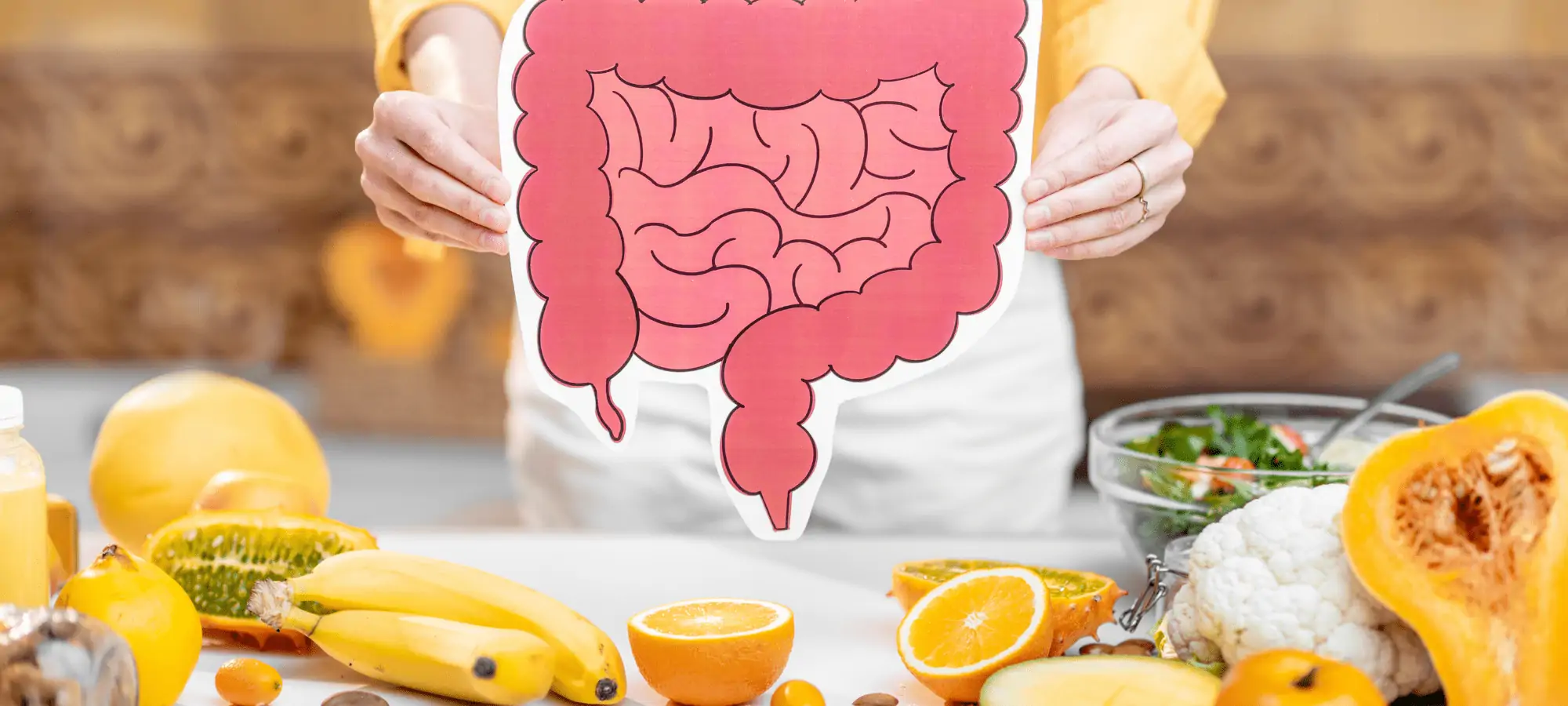
The concept of a “healthy digestive tract” is far more complex than the absence of immediate discomfort. It represents a thriving, balanced internal ecosystem—a vast, intricate network where the body’s food intake directly influences everything from nutrient absorption and immune function to mood regulation. Achieving this state of equilibrium requires moving beyond outdated, simplistic dietary rules and adopting a sophisticated, nuanced approach that recognizes the dynamic interplay between food, the gut microbiome, and the delicate mucosal lining. The goal isn’t just to alleviate temporary symptoms like bloating or indigestion; it’s to cultivate an environment where the beneficial bacteria can flourish, the gut barrier remains intact, and metabolic processes run optimally. True digestive wellness is built on the foundation of consistent, deliberate dietary choices that address the often-unseen chemical and biological demands of the GI tract, transforming food from mere fuel into targeted, functional medicine.
The Role of Fiber Is Profoundly Misunderstood in the Modern Diet
The foundation of any gut-healthy diet rests on fiber, but the role of fiber is profoundly misunderstood in the modern diet, often being reduced to a simple measure of “regularity.” In truth, fiber is a diverse category of carbohydrates that the human body cannot digest, making it the primary, non-negotiable energy source for the beneficial bacteria residing in the colon. These microbes ferment the fiber—especially the soluble, prebiotic varieties found in foods like chicory root, garlic, onions, and asparagus—producing short-chain fatty acids (SCFAs). These SCFAs, particularly butyrate, are the crucial metabolic byproducts that perform a multitude of essential functions, including providing the main energy source for the cells lining the colon, maintaining the integrity of the gut barrier, and modulating immune responses. Focusing on the diversity of fiber sources, rather than just the total amount, is essential to feed a wide, resilient array of microbial species.
Focus on the Diversity of Fiber Sources, Rather Than Just the Total Amount
Cultivating a robust and resilient gut flora depends directly on the varied nutrient input. To truly optimize the microbial environment, one must focus on the diversity of fiber sources, rather than just the total amount. The digestive ecosystem thrives on variety because different bacterial strains prefer different types of fermentable substrates. A diet dominated by only one type of fiber will only nourish a limited set of bacteria, leading to a less diverse, and therefore more fragile, microbiome. Integrating a broad spectrum of plant-based foods—including whole grains (oats, barley), legumes (beans, lentils), nuts, seeds, and a rainbow of fruits and vegetables—ensures that the entire microbial community receives the specific nutrients needed for optimal function and resilience against external stressors. This commitment to botanical diversity is the single most powerful, non-pharmacological tool for improving gut health.
The Mucosal Lining Is Constantly Under Threat from Dietary Insults
The gut barrier is a critical, one-cell-thick defense system that separates the contents of the digestive tract from the bloodstream. Its integrity is fundamental to immune health, and the mucosal lining is constantly under threat from dietary insults. Certain foods, particularly those high in processed sugars, saturated fats, and emulsifiers, can disrupt the tight junctions between the epithelial cells. This disruption, often referred to as “leaky gut,” allows undigested food particles, toxins, and microbial byproducts to cross the barrier and enter the systemic circulation, triggering a widespread inflammatory and immune response. Dietary strategies must therefore prioritize foods that support the epithelial barrier, such as those rich in L-Glutamine (found in cabbage and bone broth) and zinc, which are crucial for the rapid repair and maintenance of these barrier cells.
Fermented Foods Provide a Direct Infusion of Beneficial Organisms
Beyond providing the fuel for native bacteria, certain foods offer a direct way to introduce beneficial organisms into the digestive tract. Fermented foods provide a direct infusion of beneficial organisms—probiotics—that can temporarily colonize the gut and offer immediate, therapeutic benefits. Unpasteurized, live-culture fermented foods like kimchi, sauerkraut, natural yogurt, kefir, and kombucha contain living microbial cultures that can help restore balance after antibiotic use or during periods of stress. However, the benefits are transient; once consumption stops, the introduced strains typically pass through the system. Therefore, consuming a small amount of diverse fermented foods daily, rather than sporadic large amounts, ensures a continuous and dynamic interaction with the native microbial population, offering a constant, low-dose boost to the gut’s resilience.
Chronic Inflammation Can Undermine the Entire Digestive System
The goal of a gut-healthy diet must be the sustained reduction of internal inflammation. Chronic inflammation can undermine the entire digestive system, exacerbating conditions like irritable bowel syndrome (IBS) and potentially contributing to more serious diseases. Diets high in refined vegetable oils (omega-6 fats) and heavily processed meats tend to be pro-inflammatory, tilting the body’s chemistry toward chronic distress. Conversely, incorporating sources rich in omega-3 fatty acids—found in oily fish like salmon, flaxseeds, and walnuts—shifts the body’s biochemical environment toward an anti-inflammatory state. These fats serve as precursors for powerful lipid mediators that actively dampen inflammatory signaling pathways, thereby calming the gut lining and improving the overall cellular environment for repair and healthy function.
Artificial Sweeteners Can Disrupt the Delicate Gut Ecosystem
The widespread use of synthetic additives in place of sugar has created a new challenge for the digestive tract. Artificial sweeteners can disrupt the delicate gut ecosystem by negatively influencing the composition and function of the native microbiota. Studies have indicated that some common non-caloric sweeteners can alter the balance of bacterial species, favoring those linked to metabolic dysfunction and glucose intolerance. The precise mechanisms are still under investigation, but the message is clear: substituting one processed ingredient (sugar) for another (artificial sweetener) does not guarantee a net health benefit for the digestive tract. When seeking sweetness, prioritizing natural, whole-food sources like small amounts of honey or maple syrup, or deriving sweetness from whole fruits, is a more gut-friendly strategy than relying on synthetic laboratory-created sugar substitutes.
Timing and Consistency Are Just As Important As Content
The rhythm and pattern of eating significantly influence digestive load and efficiency. Timing and consistency are just as important as content when optimizing digestive function. Irregular eating schedules confuse the body’s natural circadian rhythms, which govern the timing of digestive enzyme release, gut motility, and nutrient uptake. Eating large, heavy meals late at night, for example, forces the GI tract to work when it is physiologically programmed for rest, leading to poor digestion, acid reflux, and compromised sleep. Adopting a consistent meal pattern, respecting the body’s natural preference for lighter evening meals, and incorporating a sustained overnight fasting window (typically 12 hours) allows the GI tract to rest, repair, and properly prepare for the next day’s digestive work.
The Role of Digestive Enzymes Often Gets Overlooked
While most attention is paid to the macro-nutrients, the subtle facilitators of digestion often go unacknowledged. The role of digestive enzymes often gets overlooked in dietary advice, yet they are the essential catalysts for breaking down food into absorbable components. The body naturally produces enzymes in the mouth, stomach, and small intestine, but age, stress, and certain conditions can reduce their efficiency. Incorporating foods that naturally contain or support enzyme function, such as fresh pineapple (containing bromelain) and papaya (containing papain), can assist the digestive process, particularly for those who experience discomfort after large, protein-rich meals. For some, incorporating bitter foods before a meal can also stimulate the natural release of bile and stomach acid, priming the digestive tract for optimal performance.
Processed and Refined Carbohydrates Are Stripped of Essential Fiber
A fundamental problem with the Western diet is the heavy reliance on foods that have been structurally dismantled. Processed and refined carbohydrates are stripped of essential fiber and nutrients, presenting a digestive challenge. When foods like white bread, refined pasta, and sugary snacks are consumed, they lack the fibrous matrix that slows down the absorption of sugars. This leads to rapid glucose spikes and a heavy, sudden load on the digestive system and pancreas. Shifting the diet toward whole, minimally processed grains—where the bran, germ, and endosperm remain intact—provides the necessary fiber to slow digestion, stabilize blood sugar, and feed the gut bacteria, offering a smoother, more sustained metabolic response that benefits the entire GI system.
A Period of Elimination Can Offer Profound Diagnostic Clarity
For individuals dealing with persistent, non-specific digestive symptoms, a broad health diet is often not enough; a more targeted approach is needed. A period of elimination can offer profound diagnostic clarity regarding specific food sensitivities or intolerances that are driving chronic inflammation. Temporarily removing common culprits—such as gluten, dairy, or high-FODMAP foods—and then systematically reintroducing them allows the individual to pinpoint which substances are causing an adverse reaction in their own unique GI tract. This personalized approach moves past general dietary theory and provides actionable data, enabling the creation of a long-term eating pattern that specifically excludes the individual triggers responsible for their digestive distress, leading to the most targeted and effective path to gut wellness.
